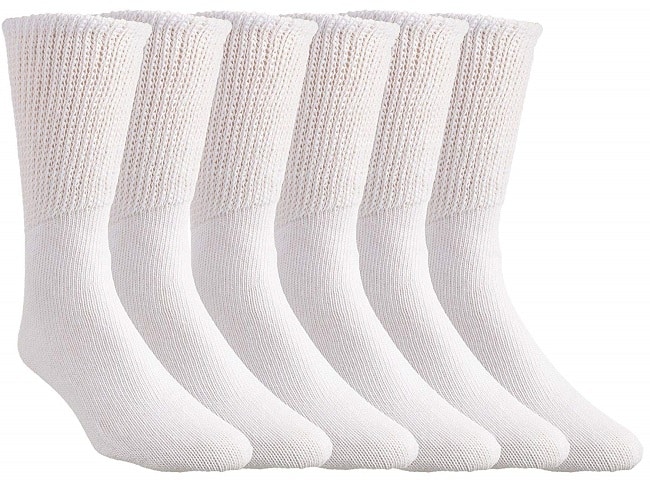Table of Contents
For people who have diabetes, Proper foot care is essential. Diabetes has an effect on nerves and circulation, and this can lead to problems that result in amputation of the foot or lower leg. You can avoid this with proper foot care.
You must inspect your feet every single day.
Look for cuts, scratches, abrasions, dry skin, blisters, and bruising. If you spot any of these things on your feet, contact your doctor for treatment. Because there can be nerve damage with diabetes, you cannot assume that there is no damage to your feet without looking them over. You can be injured without realizing it. So, it is recommended that you wear diabetic swellsox for an added protection.
Wash your feet and dry them well every day.
After drying the feet, coat them with petroleum jelly, and put socks and shoes on. As this moisture can infect your feet, avoid putting any type of oil or cream between your toes. Do not soak your feet — no matter how good it feels. This leads to dry skin.
Calluses and corns should be removed.
Do not try to remove them yourself. Instead, seek treatment from your doctor. He knows how serious such things are for diabetics, and he will help you to care for your feet properly. Each time you visit your doctor — for any reason — removes your shoes and socks so that the doctor can check your feet.
If you smoke, stop immediately!
Smoking causes the blood vessels to shrink, which in turn means that proper circulation is not getting to the feet. This can lead to amputation. Also, nerve damage can lead to a change in the shape of the foot. Ask your doctor about special shoes.
Keep your toenails trimmed and neat.
Long toenails can cause problems, and can even become easily infected. Avoid walking around without shoes, and try to avoid open-toed shoes, such as flip-flops, as well. Closed shoes will better protect your feet. Never wear shoes that do not fit well, as this can result in blisters. Before putting your feet in the water, test the water with your hand or elbow. The water may be too hot — but your feet won’t know that. So, wear diabetic swellsox.
Finally, try to keep the blood circulating.
When you sit, don’t sit with your feet tucked under you. Instead, put them flat on the floor, or prop them up in front of you. Make sure that you move your toes fairly often, as this encourages blood flow.
In people who suffer from diabetes, the feet are very vulnerable to infection.
Pay careful attention to foot care, if you have diabetes. Consult your doctor about any foot problems, even minor ones such as corns and calluses. Avoid self-help treatment and visit a podiatrist regularly.
When you have diabetes for a while, it can cause problems to your feet because of poor blood circulation and injury to your nerves in the feet. Due to the high glucose level in your body, your feet become less responsive or numb to soreness. Your feet become less sensitive to temperature, pain and vibration. Therefore, you may be more prone to accidents if you step on sharp objects or hot surfaces during the summer months. Watch out for cuts and blisters.
Due to numbness in the feet, there is a potential danger of putting unnecessary pressure and friction on the feet. This will lead to the formation of calluses, which often occur on the ball of the foot, heel and the big toe.
Action steps that you can take to look after your feet:
- Monitor your blood glucose results regularly so that it is under control. By doing that, you will alleviate the impact on the nerves in the feet and maintain good blood circulation to the feet
- Wear well-fitted shoes and appropriate diabetic socks. Make sure that your socks do not impede circulation
- Maintain a foot care routine. Wash your feet daily with warm water and apply a special foot moisturizer into your legs and feet afterward
- Always make sure that you cut your toenails straight across to avoid in growing nails
- Do not walk barefoot especially if you experienced numbness in your feet
- Avoid exposure to cold temperatures
- Regular use of a pumice stone after bathing can stop hard skin building up
- Visit the podiatrist at least once a year to check your general feet condition.
